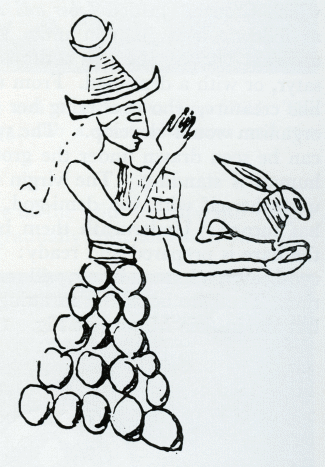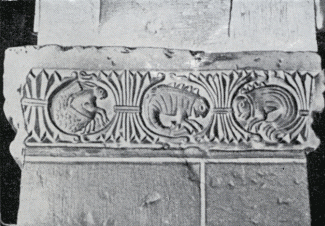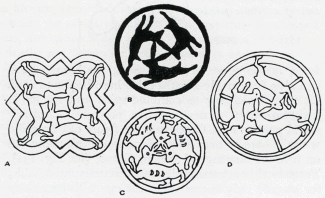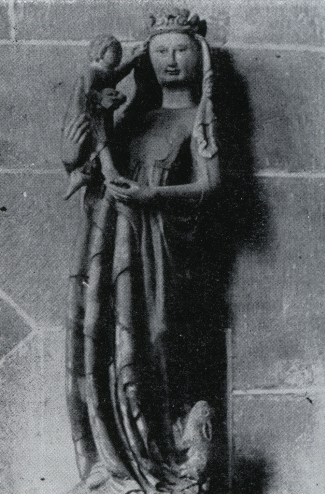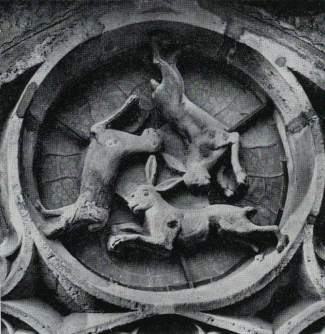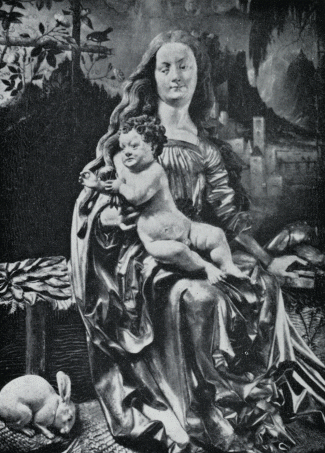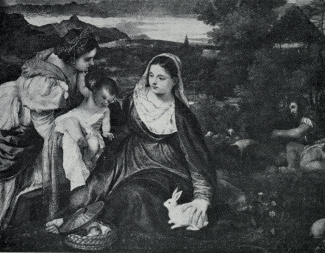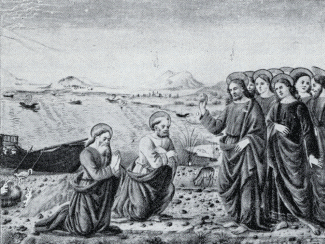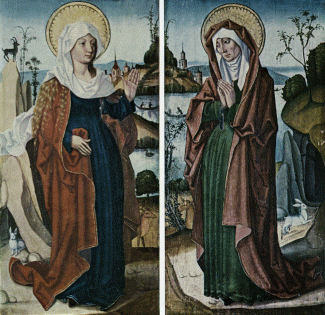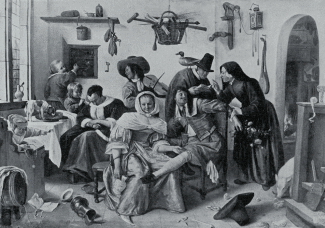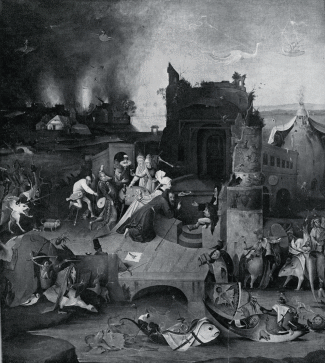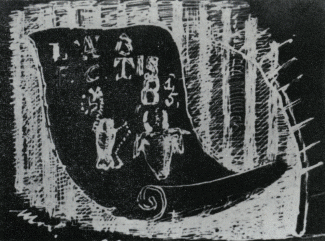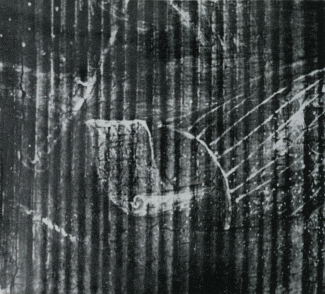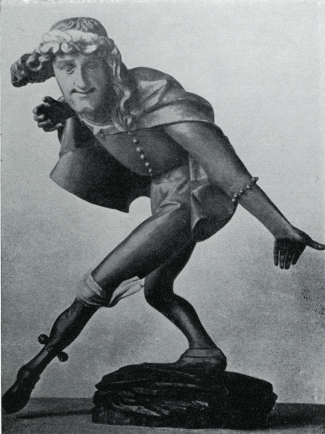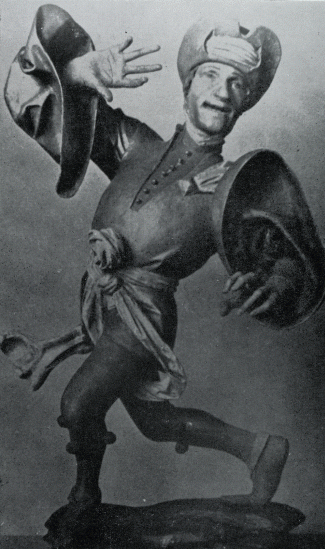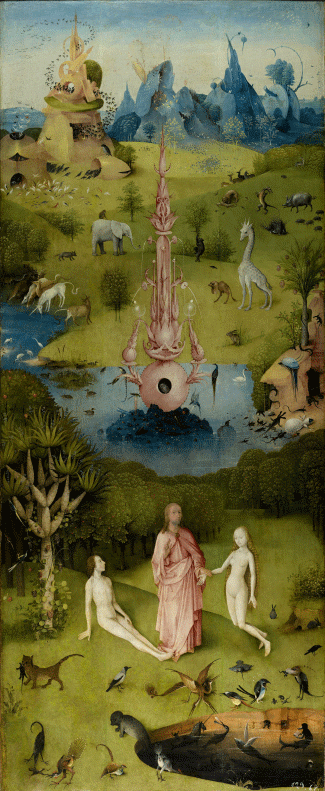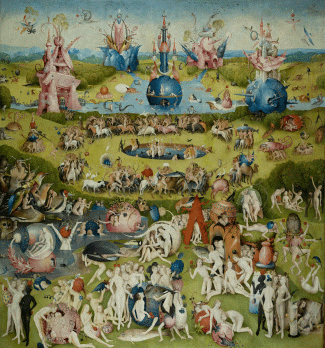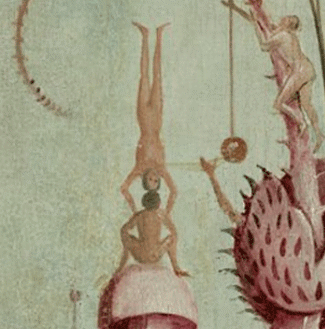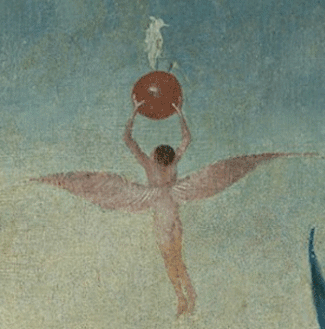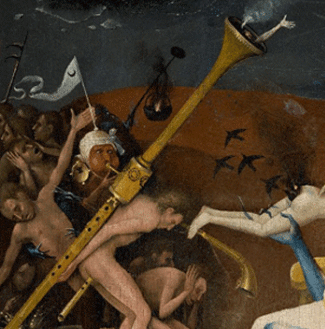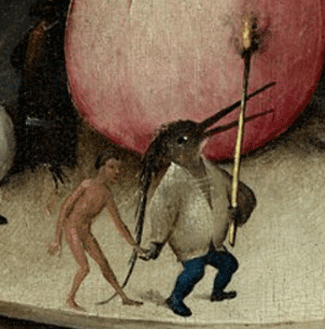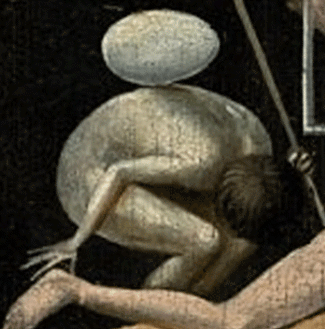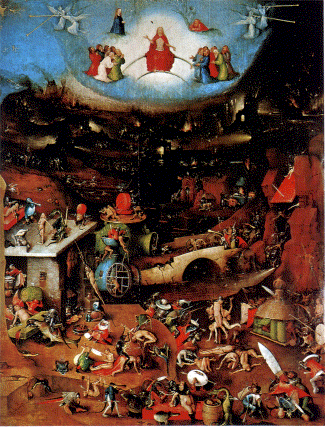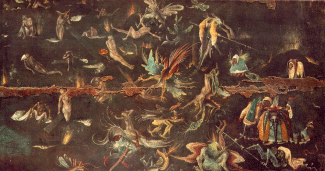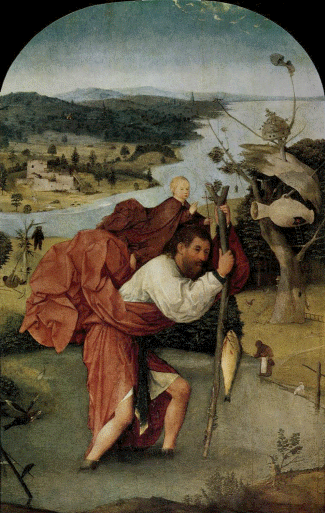122. Hare, Peru

Fig. 122. Hare-Peru. The Aztecs like the Indians and Chinese, saw the Hare in the moon. According to the experts of the Museo National, Mexico City, this illustration has come from the Borgia Codex.
123. Hare on Sicilian coin
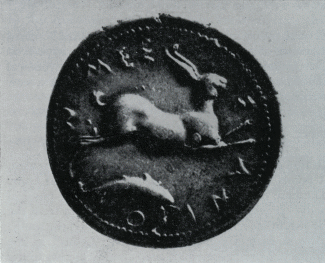
Fig. 123. Sicilian coin. If the hare stands erect the dolphin appears "upside down", so that the hare (ego-principle) and the dolphin (principle of growth) alternately stand "erect".
124. Hare on a 10 drachma coin
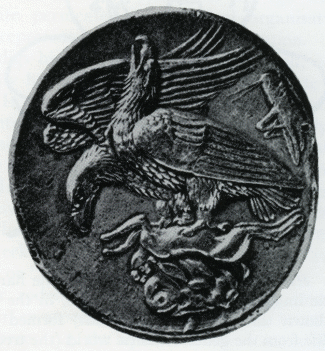
Fig. 124. 10 Drachma coin. Akragas. The soul as the picture of the eagle is shown, which can raise itself high into the air, but also raises its prey from the ground. It appears twice; the mood of soul which is directed downwards, shown in the eagle with downbent beak, has a destructive effect, like the locust. That soul which is turned upwards, shown in the picture of the other eagle, takes the hare-lepus-the Ars Chymia-upwards with itself. This hare is the symbol of the ego-strength of the spirit which can transmute all. In this hare we should not see prey that has been seized.
125. Hare, Asia
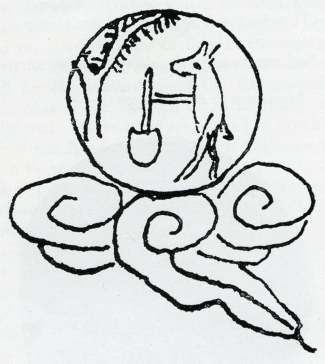
Fig. 125. Hare [xi] Asia. In the far East too the hare represented the image of the ego of man who, in the spiritual world (shown through symbolic clouds) formed his own elixir of life from the general etheric world (the tree of life).
126. Hare (the ego) hidden in a treetrunk, A Chinese Netsuke
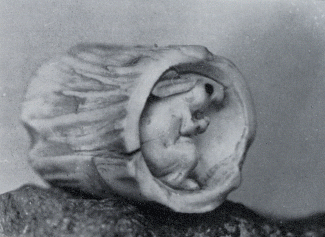
Fig 126. Hare (the ego) hidden in a tree-trunk -- the picture for the living physical body. A Chinese netsuke owned by the author.
127. Chinese Netsuke, hare attacked by an eagle
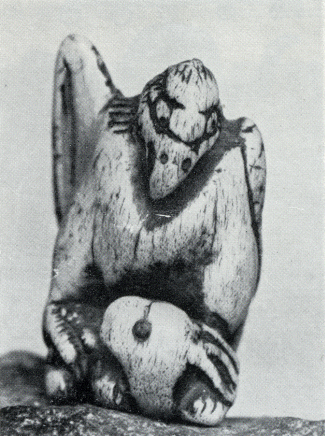
Fig. 127. Hare attacked by an eagle (Chinese netsuke). Here the eagle represents the lower soul-forces which darken the ego; in other words a darkening mood of soul overcomes the strength of the ego. Owned by the author.
128. Horn blower who is standing upon a hare
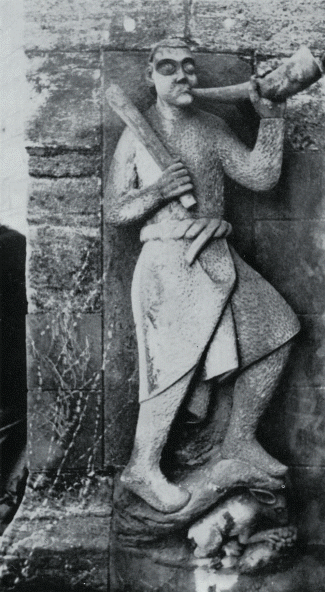
Fig. 128. A horn blower who is standing upon a hare (reproduction Peter Heman, Basel). Basel Munster, outer wall.
129. Mountain of the Adepts
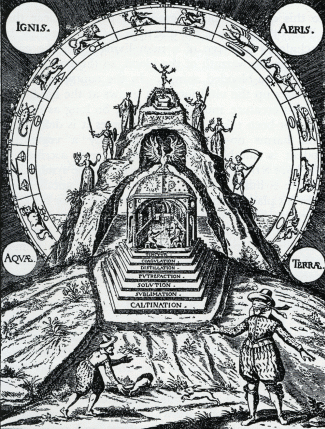
Fig. 129. Mountain of the adepts. Alchemists' picture.
130. Mons Philosophorum
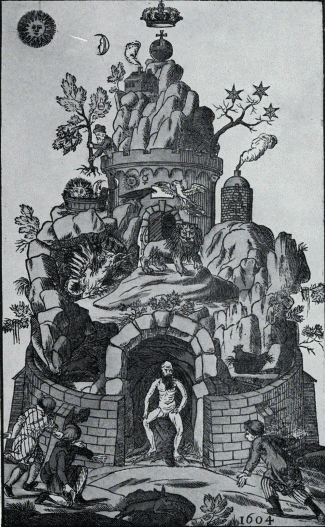
Fig. 130. Mons Philosophourum from "Secret Symbols of the Rosicrucians from the 16th and 17th centuries", or "the innocent ABC for young students who practise daily in the School of the Holy Ghost in the light of nature and theology" [22]. (The book has been reprinted and is again obtainable.)
131. Tragedia with a white hare and the thyrsus rod, from F. CREUZER
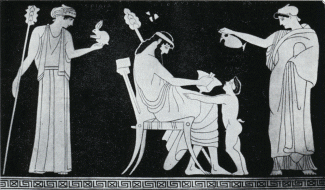
Fig. 131. Tragedia with a white hare and the Thyrsus rod on a Greek vase, from F. CREUZER [20].
132. Liber and Libera, from F. CREUZER
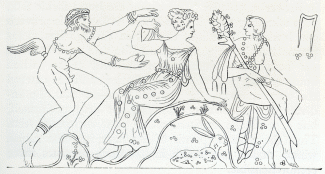
Fig. 132. Liber and Libera from F. CREUZER [20] (Plate VM).

